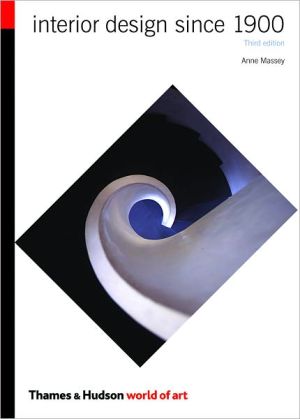

 |

|

The average rating for Interior Design Since 1900 based on 2 reviews is 4 stars.
Review # 1 was written on 2017-06-30 00:00:00 Dora Leonard Dora LeonardThe book opens with the various schools that arose which sought to define themselves from the cluttered privacy... AKA the stifling intimacy of Victorian interiors. Trends in decoration tended to favor bourgeois ideas of aristocratic taste with lavishly decorated surfaces. The Victorian approach stuffed the room with displays which reflect a traditionally rooted orientation in such a way that the home would be insulated from the "threat of modernity" as Massey phrases it. The Modern movement at the beginning of the 20th century saw the excessive ornament of the 19th century (the whiplashes of Art Nouveau, the terrific motifs of *Jugendstil*) as degenerate--Adolf Loos being an early Modernist proponent of this point of view with his critical essay 'Ornament and Crime' which linked decorative surfaces with tattoos, graffiti on bathroom walls, and other modes of criminality. Rather than a complete break from the past, architecture and interiors were quite classically informed (as anyone who reads Le Corbusier will be aware of) if only in a brutally abstract sense. Much of what makes up the beginning of the book is a discussion of interiors by way of architecture. After all, interior decoration was not a recognized discipline before the Twentieth Century, and it would take decades before the work of interior design would be academically respected. But until then, interior work was seen to be the job of upholsterers and furniture makers rather than a discipline in-and-of-itself. Due to the fact that women were, for the most part a "domestic species" at that time, interior decorating (later called, "interior *design*", a term with much more gravitas attached to it) was an industry initially dominated by women. As with many professions which have been dominated by women, it took a long time for it to gain the respect of the public, and was regarded as a brand of fashion rather than the more "serious" work of architecture. Initially, much of the Modernist work done with interiors set to work to match interiors and design with the "new human being" which would inhabit them--an endeavor squarely seen as "architectural" in scope. Suffice to say, as the century progressed, this vision dimmed in favor of a more expressive, individualistic ideology. The home would shift from an efficient work space to that which would be productive and benefit the health of the user, to a place that would properly serve to express the residing unit. By the end of the book, we see the home not as a refuge from modernity as it was in the 19th century... quite the opposite. Namely, it was marked by the concern for sustainability in construction and brand identity--two factors which are distinctly driven by new technologies and the contemporary phenomenon of consumer culture. It think it would have been interesting to discuss what strange bedfellows they make! A fascinating background. |
Review # 2 was written on 2014-07-21 00:00:00 Hal Hall Hal HallCracking book. Tells you a lot about building one. |
CAN'T FIND WHAT YOU'RE LOOKING FOR? CLICK HERE!!!